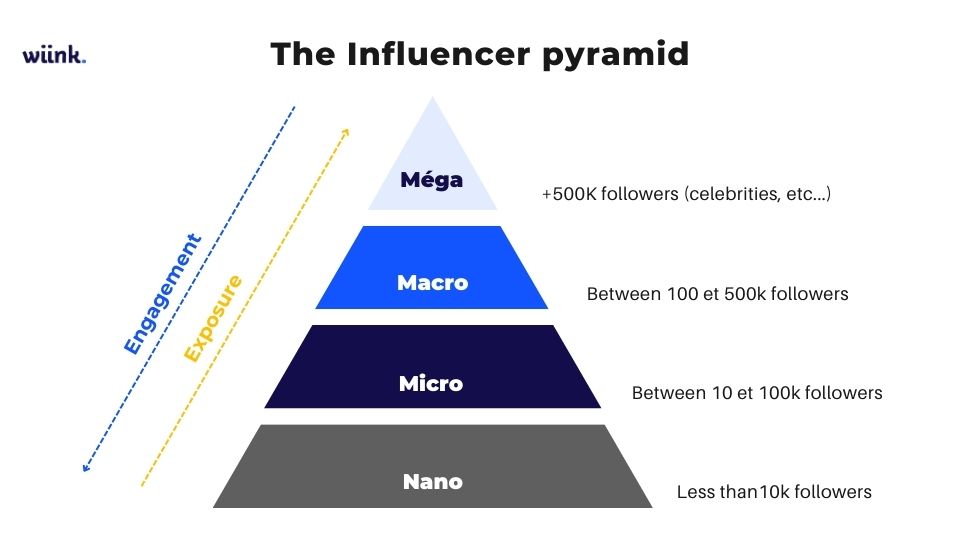In today’s rapidly evolving digital marketing landscape, influencer marketing has emerged as a powerful tool for both B2B and B2C businesses. It’s no longer a question of whether to use influencer marketing, but how to do it effectively. At Ligeniqo Marketing Agency, we understand that staying ahead of the competition requires a keen understanding of your rivals’ strategies. This comprehensive guide will walk you through the process of performing an effective Competitor Influencer Marketing Strategy Analysis, including “How To Perform an Influencer Competitor Audit.”
Introduction to Influencer Marketing
In the ever-evolving world of digital marketing, one strategy has consistently proven to be a game-changer: influencer marketing. As traditional advertising have their strengths and weaknesses but have become less effective, competitor brands are turning to a list of influencers to create authentic connections with their audiences. Whether you’re a seasoned marketer or just dipping your toes into the marketing waters, understanding influencer marketing is essential for staying relevant and competitive. Let’s dive into what influencer marketing is, why it’s so powerful, and how it can benefit your business.
What is Influencer Marketing?
Influencer marketing is a type of social media marketing that involves endorsements and product placements from influencers—people and organizations who have a purported expert level of knowledge or social influence in their field. These influencers can range from well-known celebrities to niche content creators with dedicated followers. The core idea is simple: by partnering with influencers, brands can hold their credibility and reach to promote products or services in a way that feels more genuine and relatable than traditional advertising.
Why Influencer Marketing Matters
Influencer marketing has become a cornerstone of digital marketing strategies for several compelling reasons:
- Authenticity and Trust: Influencers have built strong, loyal communities based on trust and authenticity. Their followers value their opinions and recommendations, making influencer endorsements highly effective.
- Targeted Reach: Influencers cater to specific niches, allowing brands to target their marketing efforts more precisely. Whether you’re targeting tech enthusiasts, fashionistas, or fitness buffs, there’s an influencer for every niche.
- High Engagement Rates: Influencer content typically generates higher engagement rates compared to brand-generated content. Followers are more likely to like, comment, and share posts from influencers they admire.
- Cost-Effective: While top-tier influencers may come with a hefty price tag, micro-influencers (those with smaller but highly engaged followings) often offer a more cost-effective option with a higher return on investment (ROI).
Types of Influencers
Influencers come in various shapes and sizes, each offering unique benefits depending on your marketing goals. Here are the main types of influencers you might consider:
- Mega-Influencers: These are celebrities and individuals with massive followings (over 1 million followers). They offer extensive reach but often come at a high cost.
- Macro-Influencers: With follower counts ranging from 100,000 to 1 million, macro-influencers are popular figures who can provide significant reach and engagement.
- Micro-Influencers: These influencers have between 10,000 and 100,000 followers. They typically offer high engagement rates and a more personal connection with their audience.
- Nano-Influencers: With fewer than 10,000 followers, nano-influencers have a small but dedicated following. They’re great for hyper-targeted campaigns and can be very cost-effective.

Key Benefits of Influencer Marketing
Influencer marketing offers numerous advantages for brands looking to enhance their digital presence. Here are some key benefits:
- Enhanced Brand Awareness: Partnering with influencers can significantly boost your brand’s visibility. Their followers get introduced to your products, increasing brand recognition and recall.
- Improved Credibility and Trust: Influencers are seen as experts in their niches. When they endorse your product, it lends credibility and trust to your brand.
- Boosted Engagement: Influencer posts often receive more likes, comments, and shares compared to traditional brand posts, leading to higher engagement levels.
- Access to New Audiences: Collaborating with influencers allows you to tap into new audiences that you might not reach through your own channels.
- Content Creation: Influencers are skilled content creators. Partnering with them means you get access to high-quality content that you can repurpose across your own marketing channels.
How to Get Started with Influencer Marketing
Embarking on an influencer marketing journey can seem daunting, but it doesn’t have to be. Here’s a step-by-step guide to help you get started:
- Define Your Goals: What do you want to achieve with influencer marketing? Whether it’s brand awareness, lead generation, or sales, having clear goals will guide your strategy.
- Identify the Right Influencers: Look for influencers whose audience aligns with your target market. Consider their engagement rates, content style, and overall brand fit.
- Build Relationships: Approach influencers with personalized messages. Show that you’ve done your homework and explain why a partnership would be mutually beneficial.
- Create Authentic Collaborations: Work with influencers to create content that feels genuine and resonates with their audience. Authenticity is key to successful influencer marketing.
- Monitor and Measure: Track the performance of your influencer competitor campaigns. Use analytics and competitor analysis tools to measure engagement, reach, and ROI. Adjust your strategy based on the results.
The Power of Influencer Marketing
- Increased Trust and Credibility: Influencers have built strong relationships with their followers, making their endorsements highly trusted.
Wider Reach: Collaborating with influencers can help brands reach a broader audience that may not be accessible through traditional marketing channels.
Enhanced Engagement: Influencer content often generates higher engagement rates compared to brand-produced content.
2. Why Competitor Analysis is Crucial
Staying ahead of the competition requires more than just keeping up with trends—it demands a deep understanding of what your competitors are doing. This is especially true in the realm of influencer marketing, where the right partnerships can make or break your brand’s success. Conducting a thorough competitor analysis in influencer marketing is not just a strategic move; it’s a necessity. Let’s explore why competitor analysis is crucial and how it can benefit your influencer marketing strategy.
Understanding Competitor Analysis in Influencer Marketing
Competitor analysis in influencer marketing involves researching and evaluating the influencer partnerships and strategies of your competitors. This process includes identifying which influencers they work with, the nature of their campaigns, the engagement they receive, and the overall impact on their brand. By doing so, you gain valuable insights that can inform your own influencer marketing efforts.
Benefits of Competitor Analysis
- Benchmarking: Understand where you stand in comparison to your competitors.
Strategy Refinement: Gain insights into what strategies are effective and which ones to avoid. - Opportunity Identification: Discover untapped influencer partnerships and niche markets.
- Risk Mitigation: Anticipate and counteract competitive moves.
- Key Benefits of Competitor Analysis
Identifying Opportunities and Gaps: By analyzing your competitors’ influencer marketing program, you can identify opportunities that they may have missed. For instance, you might discover a segment of influencers or a niche audience that remains untapped. This insight allows you to capitalize on these opportunities and fill the gaps in your own strategy. - Benchmarking Performance: Understanding how your competitors are performing can provide a benchmark for your own campaigns. Analyzing metrics such as engagement rates, follower growth, and campaign reach helps you set realistic goals and measure your success against industry standards.
- Improving Campaign Effectiveness: Learning from your competitors’ successes and failures can help you refine your influencer marketing strategy. For example, if a competitor’s campaign with a certain influencer type or content style performs exceptionally well, you might consider adopting a similar approach. Conversely, avoiding strategies that didn’t work for them can save you time and resources.
- Staying Ahead of Trends: Competitor analysis keeps you informed about the latest trends and tactics in influencer marketing. By observing what works for others, you can stay on top of industry trends and adapt your strategies to remain competitive.
- Enhancing Audience Understanding: Analyzing the engagement and feedback on your competitors’ influencer campaigns can provide insights into audience preferences and behavior. Understanding what resonates with the audience can help you tailor your own content to better meet their needs and expectations.
- Building Stronger Relationships with Influencers: Competitor analysis can reveal which influencers are working with your competitors. This information is valuable when approaching influencers, as it allows you to present a compelling case for why they should partner with your brand instead. Additionally, it helps you avoid potential conflicts or overlapping partnerships.
Real-World Examples of Competitor Analysis in Action
To illustrate the importance of competitor analysis, consider these real-world examples:
Fashion Industry: A fashion brand noticed that their competitor was collaborating with fashion bloggers who consistently received high engagement rates. By partnering with similar influencers and focusing on user-generated content, the brand was able to boost their own engagement and follower count.
- Tech Industry: A tech company observed that their competitor’s influencer campaigns were heavily focused on product reviews by tech experts. By diversifying their approach and including lifestyle influencers, they reached a broader audience and increased their market share.
- Fitness Industry: A fitness brand discovered that their competitor’s campaigns were generating high engagement through workout challenges led by fitness influencers. By creating their own unique challenges and incorporating influencer-led live sessions, they successfully attracted and retained a larger audience.
3. Understanding Influencer Marketing Strategies
Before diving into competitor analysis, it’s crucial to understand the different types of influencer marketing strategies. These can range from one-off collaborations to long-term partnerships, each with its own set of benefits and challenges.
Key Components of Influencer Marketing Strategies
1. Defining Goals and Objectives: Before embarking on an influencer marketing campaign, it’s crucial to establish clear goals and objectives. Common objectives include:
- Increasing brand awareness
- Driving website traffic
- Boosting sales
- Enhancing brand reputation
- Growing social media following
- Clearly defined goals will guide your strategy and help measure the success of your campaigns.
2. Identifying the Right Influencers: Selecting the right influencers is critical to the success of your campaign. Consider the following factors:
- Relevance: Ensure the influencer’s audience aligns with your target market.
- Reach: Evaluate the influencer’s follower count to gauge potential exposure.
- Engagement: Look at the influencer’s engagement rates (likes, comments, shares) rather than just their follower count.
- Authenticity: Choose influencers who genuinely resonate with their audience and selectively endorse brands.
3. Types of Influencers: Influencers can be categorized based on their reach and influence, which we learned about earlier in this blog.
4. Crafting a Compelling Narrative: The narrative or story behind your campaign is crucial. It should align with your brand values and resonate with the influencer’s audience. Influencers should have creative freedom to present your brand in a way that feels natural and authentic to their followers.
5. Types of Influencer Marketing Campaigns: There are several types of campaigns you can run, each with its unique advantages, which we’ll learn about later in this blog.
6. Measuring Success: To evaluate the effectiveness of your influencer marketing campaigns, track key performance indicators (KPIs) such as:
- Engagement Rate: Likes, comments, shares, and overall interaction with the content.
- Reach and Impressions: The number of people who see the content.
- Website Traffic: Increase in website visits, particularly from referral links.
- Conversions and Sales: Sales generated from the campaign, often tracked through unique affiliate links or discount codes.
- Brand Sentiment: Changes in how your brand is perceived, often measured through social listening tools.
Developing a Winning Influencer Marketing Strategy
- Research and Planning: Start with thorough research to understand your audience and market landscape. Identify trends, preferences, and pain points of your target audience. Use this information to inform your influencer selection and campaign messaging.
- Budgeting: Determine your budget based on your goals, the type of influencers you want to work with, and the scope of your campaign. Remember to account for costs such as influencer fees, product samples, and any additional advertising spend.
- Building Relationships with Influencers: Approach potential influencers with a personalized message that highlights why you think they are a good fit for your brand. Be clear about your expectations and what you can offer in return. Building genuine relationships can lead to more successful campaigns and authentic collaborations.
- Creating High-Quality Content: Work closely with influencers to create engaging and high-quality content. Provide them with brand guidelines but allow them creative freedom to ensure the content feels authentic and resonates with their audience.
- Launching and Promoting Your Campaign: Once your content is ready, launch your campaign and promote it across your own social media channels, website, and email newsletters. Encourage influencers to cross-promote on their platforms to maximize reach through age and gender.
- Monitoring and Optimizing: Continuously monitor the performance of your campaign. Use analytics tools to track your KPIs and gather insights. Be prepared to make adjustments based on what is working and what isn’t. This iterative approach ensures your strategy remains effective and responsive to changing conditions.
Types of Influencer Collaborations
- Sponsored Content: Paying influencers to create and share content featuring your products.
- Product Reviews: Providing influencers with your products to review and share their honest opinions.
- Giveaways and Contests: Partnering with influencers to host giveaways or contests to increase brand visibility.
- Affiliate Marketing: Offering influencers a commission for sales generated through their unique referral links.
- Brand Ambassadorships: Forming long-term partnerships with influencers who consistently promote your brand.
4. How to Perform a Competitor Influencer
Marketing Strategy Analysis
To conduct a thorough Competitor Influencer Marketing Strategy Analysis, follow these steps:
Identify Your Competitors
- Start by listing your direct and indirect competitors—those offering similar products or services to the same target audience.
- Use market research tools to identify additional competitors you might have overlooked.
- Also, consider indirect competitors who may not be in the same industry but target a similar demographic.
Research Their Influencer Partnerships
- Analyze their social media profiles and websites to identify influencers they work with, to do so, use social media platforms, influencer databases, and tools like Social Blade, BuzzSumo, or HypeAuditor.
- Look for mentions, tags, and collaborations across various platforms.
- Look for patterns in their partnerships, such as recurring influencers or specific niches they target.
Evaluate Influencer Performance
- Assess the engagement rates, follower growth, and overall impact of the influencers your competitors are partnering with by looking at likes, comments, shares, and overall engagement rates.
- Use tools like Social Blade, HypeAuditor, Sprout Social or Hootsuite, and Influencer.co to gather data.
Analyze Content and Messaging
- Examine the type of content influencers are creating for your competitors. Note the type of content (e.g., posts, stories, videos), the messaging, and the engagement levels.
- Pay attention to the messaging, tone, and call-to-action used in these campaigns.
Determine Strategy Effectiveness
- Evaluate the success of your competitors’ influencer campaigns based on metrics like engagement, reach, and conversions.
- Look for patterns and trends that indicate what is working and what isn’t.
Identify Gaps and Opportunities
- Compare your findings with your current influencer strategy.
- Identify areas where your competitors are excelling and where you can improve.
Monitor Audience Feedback
Read through comments and feedback from the audience on these campaigns. Identify common themes, praises, or criticisms that can provide insights into audience sentiment and preferences.
Track Long-Term Impact
Observe any long-term effects of your competitors’ influencer campaigns, such as increased brand visibility, follower growth, or changes in their market position. This helps gauge the overall effectiveness of their strategies.
5. How To Perform an Influencer Competitor Audit
Performing an Influencer Competitor Audit is a crucial step in understanding your competitors’ influencer marketing strategies. This process involves a detailed examination of your competitors’ influencer partnerships and the effectiveness of their campaigns.
Step-by-Step Guide to Performing an Influencer Competitor Audit
By analyzing how competitors are using influencers, you can uncover valuable insights to refine your approach, differentiate your brand, and enhance your marketing effectiveness. Here’s a comprehensive step-by-step guide to performing an Influencer Competitor Audit:
1.Define Your Objectives
Before diving into the audit, clarify what you want to achieve. Your objectives will guide your analysis and help you focus on relevant data. Typical objectives might include:
- Understanding competitor influencer partnerships and strategies
- Identifying successful influencer types and content formats
- Evaluating engagement and reach metrics
Discovering potential influencers for your own campaigns
2. Identify Your Competitors
Start by listing key competitors who are active in influencer marketing. Focus on direct competitors within your industry, as well as those with similar target audiences. Your list may include:
- Direct competitors offering similar products or services
- Brands with a similar market positioning or audience
- Industry leaders who are setting trends
3. Gather Competitor Information
Collect data on how your competitors are utilizing influencers. This involves several tasks:
- Social Media Analysis: Monitor competitors’ social media accounts to identify posts featuring influencers. Look for hashtags, mentions, and tagged posts.
- Influencer Marketing Platforms: Use tools like AspireIQ, Traackr, or Influence.co to find detailed data on influencer partnerships.
- Competitor Websites and Blogs: Check for mentions of influencer collaborations or sponsored content on competitors’ websites and blogs.
- News and Press Releases: Look for announcements about influencer partnerships in industry news and press releases.
- Collect information on your competitors’ influencer partnerships.
- Use tools like BuzzSumo, Mention, and
- Google Alerts to track mentions and collaborations.
4. Analyze Influencer Partnerships
Dive into the details of each influencer partnership to gain insights:
- Influencer Selection: Identify the influencers your competitors are working with. Note their follower count, niche, and engagement rates.
- Campaign Objectives: Determine the goals of each influencer campaign (e.g., brand awareness, product launches, event promotions).
- Content Formats: Examine the types of content used in these campaigns, such as sponsored posts, product reviews, or giveaways.
- Frequency and Duration: Observe how often competitors collaborate with influencers and the duration of these partnerships.
- Assess the criteria your competitors use to select influencers.
- Consider factors such as follower count, engagement rate, niche relevance, and audience demographics.
5. Evaluate Campaign Performance & Objectives
Assess how successful these influencer campaigns have been:
- Engagement Metrics: Analyze likes, comments, shares, and overall engagement on influencer content.
- Reach and Impressions: Estimate the reach and impressions of influencer posts to gauge visibility.
- Sentiment Analysis: Review audience sentiment in comments and reactions to understand the impact on brand perception.
- Conversion Metrics: Where possible, track conversion metrics such as click-through rates or sales attributed to influencer campaigns.
- Identify the goals of your competitors’ influencer campaigns (e.g., brand awareness, lead generation, sales).
- Analyze how well these objectives are being met.
6. Identify Patterns and Trends
Look for common patterns and trends across your competitors’ influencer marketing efforts:
- Successful Influencer Types: Identify which types of influencers (mega, macro, micro, nano) seem to drive the best results.
- Effective Content Styles: Note which content formats and styles resonate most with audiences.
- High-Engagement Channels: Determine which social media platforms are most effective for influencer marketing in your industry.
- Campaign Strategies: Analyze the strategies used, such as long-term ambassadorships versus one-off collaborations.
- Examine the quality and creativity of the content produced by influencers.
- Look for consistency in branding and messaging.
7. Benchmark Against Your Own Strategy
Compare the insights gained from the competitor audit to your current influencer marketing strategy:
- Gap Analysis: Identify areas where your strategy may be lacking compared to competitors. Look for opportunities to improve your influencer selection, content creation, or campaign execution.
- Opportunity Identification: Discover new influencers or content ideas that could enhance your strategy. Consider gaps in competitors’ approaches that you can fill.
8. Develop Actionable Insights
Translate your findings into actionable recommendations for your influencer marketing strategy:
- Influencer Partnerships: Consider reaching out to influencers that have been successful for competitors, or identify new influencers who align with your brand.
- Content and Campaign Ideas: Develop new content ideas or campaign formats based on what’s working in the industry.
- Strategic Adjustments: Adjust your influencer marketing approach to better align with successful tactics observed in the audit.
9. Implement and Monitor
Put your insights into action by refining your influencer marketing strategy:
- Campaign Planning: Integrate new strategies, influencers, and content ideas into your campaign plans.
- Performance Tracking: Continuously monitor the performance of your updated strategy to ensure it meets your objectives.
- Regular Audits: Conduct regular competitor audits to stay updated on industry trends and adjust your strategy as needed.
- Use analytics tools to measure the engagement and reach of influencer content.
- Compare these metrics with your own influencer campaigns.
10. Report and Review
Document your findings and review the impact of your revised strategy:
- Reporting: Prepare detailed reports on competitor insights, strategy changes, and campaign results.
- Review Meetings: Hold review meetings with your marketing team to discuss what worked, what didn’t, and any further adjustments needed.
- Analyze audience feedback and sentiment towards influencer content.
Identify any recurring themes or issues.
6. Tools and Techniques for Effective Analysis
Effective analysis of competitor influencer marketing strategies requires the right tools and techniques. Here are some recommended tools and methods to help you perform a comprehensive analysis:
Recommended Tools
- BuzzSumo: Tracks mentions and content performance across social media platforms.
- HypeAuditor: Provides detailed analytics on influencer performance, including engagement rates and audience demographics.
- Social Blade: Tracks influencer growth and performance metrics.
- Mention: Monitors brand mentions and influencer collaborations in real-time.
- Google Alerts: Notifies you of new mentions and collaborations involving your competitors.
Techniques for Analysis
Content Analysis: Examine the type and quality of content produced by influencers.
- Engagement Analysis: Measure likes, comments, shares, and other engagement metrics.
- Sentiment Analysis: Use tools like Brandwatch to analyze audience sentiment towards influencer content.
- Network Analysis: Map out the network of influencers and their connections to your competitors.
7. Case Studies: Successful Influencer Strategies
Examining case studies of successful influencer strategies can provide valuable insights and inspiration for your own campaigns. Here are a few examples of brands that have effectively played influencer marketing:
Case Study 1: Daniel Wellington
Approach: Daniel Wellington, a watch brand, built its success through influencer marketing. They collaborated with micro-influencers to create authentic content featuring their products.
Strategy: The brand provided influencers with free watches in exchange for social media posts using the hashtag #DanielWellington.
Results: This strategy helped Daniel Wellington achieve rapid growth, amassing millions of followers and significantly increasing sales.
Case Study 2: Glossier
Approach: Glossier, a beauty brand, utilized influencer marketing to create a community-driven brand.
Strategy: They collaborated with both macro and micro-influencers, encouraging them to share their genuine experiences with Glossier products.
Results: Glossier’s influencer strategy contributed to its strong brand loyalty and impressive revenue growth, with much of its success attributed to word-of-mouth marketing.
8. Common Pitfalls and How to Avoid Them
While influencer marketing can be highly effective, there are common pitfalls that brands should be aware of. Here are some of these pitfalls and tips on how to avoid them:
Pitfall 1: Choosing the Wrong Influencers
Solution: Conduct thorough research to ensure influencers align with your brand values and have an engaged, relevant audience.
Pitfall 2: Lack of Clear Objectives
Solution: Define clear, measurable goals for each influencer campaign to track its effectiveness.
Pitfall 3: Overlooking Micro-Influencers
Solution: Don’t just focus on influencers with massive followings. Micro-influencers often have highly engaged audiences and can deliver better ROI.
Pitfall 4: Inconsistent Messaging
Solution: Ensure consistency in messaging and branding across all influencer collaborations to maintain a cohesive brand image.
Pitfall 5: Ignoring Analytics
Solution: Regularly track and analyze campaign performance using the recommended tools to make data-driven decisions.
9. Integrating Findings into Your Marketing Strategy
Once you know how to perform an Influencer Marketing Strategy Analysis, it’s time to integrate your findings into your marketing strategy. Here’s how:
Align with Business Goals
Ensure that your influencer marketing strategy aligns with your overall business objectives, whether it’s increasing brand awareness, generating leads, or driving sales.
Optimize Influencer Selection
Use insights from your competitor analysis to refine your criteria for selecting influencers. Focus on those who can deliver the best results for your brand.
Improve Content Quality
Learn from your competitors’ successes and failures to enhance the quality and creativity of your influencer content.
Enhance Engagement
Implement strategies that have proven effective for your competitors to boost engagement rates.
Monitor and Adjust
Continuously monitor the performance of your influencer campaigns and make adjustments based on the data.
10. Conclusion
Competitor influencer marketing strategy analysis is a critical component of a successful marketing strategy. By understanding your competitors’ approaches, you can gain valuable insights, identify opportunities for improvement, and stay ahead in the competitive landscape. Remember to follow the steps outlined in this guide and use the recommended tools to perform an effective analysis. At Ligeniqo Marketing Agency, we’re here to help you navigate the complexities of influencer marketing and achieve your business goals.
How To Perform an Influencer Competitor Audit
Don’t forget, performing an influencer competitor audit is essential for gaining a comprehensive understanding of your competitors’ strategies. By following the steps outlined in this guide, you can ensure your influencer marketing efforts are well-informed and strategically sound.
Thank you for joining us on this in-depth exploration of Competitor Influencer Marketing Strategy Analysis. We hope this guide has provided you with the knowledge and tools needed to elevate your influencer marketing efforts and achieve lasting success.
Appendices
Appendix A: List of Recommended Tools
BuzzSumo
HypeAuditor
Social Blade
Mention
Google Alerts
Appendix B: Influencer Metrics Glossary
Engagement Rate: The percentage of an influencer’s audience that interacts with their content.
Reach: The total number of unique users who see an influencer’s content.
Impressions: The total number of times an influencer’s content is displayed, regardless of whether it is clicked or not.
Sentiment Analysis: The process of analyzing the emotions and opinions expressed in content.
Appendix C: Influencer Marketing Best Practices
Authenticity: Ensure that influencer content feels genuine and aligns with your brand values.
Transparency: Be clear about sponsored content and adhere to relevant advertising regulations.
Diversity: Collaborate with a diverse range of influencers to reach different audience segments.
By following the insights and strategies outlined in this comprehensive guide, you can perform a thorough Competitor Influencer Marketing Strategy Analysis and upgrade the findings to enhance your own influencer marketing efforts. At Ligeniqo Marketing Agency, we are committed to helping you achieve your marketing goals with influencer marketing services.
Written by
Rawd Aldandashi
Published: July 28, 2024
Share:




